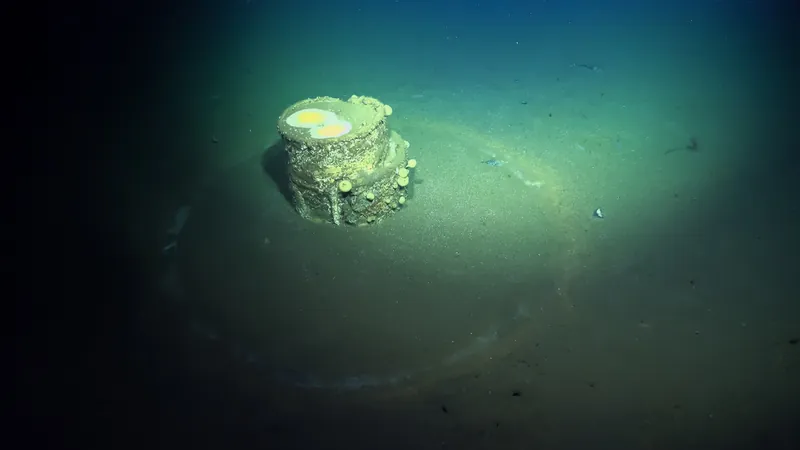
Shocking Discovery: What Lies Within the Infamous 'Halo' Barrels Off Los Angeles?
2025-09-09
Author: Ken Lee
For decades, the ocean floor off Los Angeles has been a graveyard for thousands of industrial waste barrels, largely left untouched and unlabeled. But now, groundbreaking research reveals unsettling secrets about these submerged containers that are wreaking havoc on the marine environment.
Researchers have detected that the chemicals leaking from these barrels are incredibly alkaline, threatening to render surrounding waters lifeless. This grim finding follows decades of neglect, dating back to the 1930s when waste from radioactive materials, oil drilling, and military explosives was dumped into 14 deep-sea sites off Southern California, as reported by the U.S. Environmental Protection Agency.
The issue came to light in 2020 when a LA Times exposé unveiled the existence of these barrels through deep-sea robotic surveys. Subsequent explorations by the Scripps Institution of Oceanography revealed around 27,000 barrel-like shapes littering the ocean floor—some even ringed by distinctive white haloes, sparking fears they held the notorious pesticide DDT.
Despite the alarming presence of these toxic relics, the precise content of most barrels remains a mystery. However, recent sediment sample analyses, led by microbiologist Johanna Gutleben, have begun to illuminate the situation. Notably, no increases in DDT levels were detected near the examined barrels, suggesting they do not contain this particular pollutant.
Instead, three of the barrels displayed those haunting white haloes and were found to leakage high-pH caustic alkaline waste—an astonishing finding that has shifted the research focus away from DDT. This alkaline waste appears to have decimated microbial life in the vicinity, transforming the seafloor into a barren wasteland.
"We were focused primarily on DDT, but now we realize we might need to widen our scope to include other potential hazards," Gutleben remarked.
The analysis didn't pinpoint specific chemicals within the barrels, but it's noteworthy that both DDT production and oil refining generate alkaline waste. As Gutleben pointed out, the residues from DDT manufacturing were often acidic, raising the haunting question of just how hazardous the alkaline waste truly is.
Much of the research also focused on the formation of those peculiar white haloes. Leaked alkaline substances interact with magnesium in the seawater, resulting in magnesium hydroxide, or brucite. This process creates a thick, concrete-like crust that continues to leak, maintaining a high pH and forming calcium carbonate dust around the barrels.
What’s even more alarming is the persistence of these toxic effects—lasting over fifty years suggests that this alkaline waste is a long-term environmental threat akin to DDT, according to co-author Paul Jensen.
"It's shocking that over five decades later, these impacts are still evident," Jensen noted, hinting at the vast scope of the contamination problem.
To combat this lingering disaster, researchers propose leveraging the identified white halos to better assess the barrels containing alkaline waste and thus measure the contamination's full extent. Interestingly, about one-third of the examined barrels are now confirmed to have these halos, but whether this ratio holds for unseen barrels remains uncertain.

 Brasil (PT)
Brasil (PT)
 Canada (EN)
Canada (EN)
 Chile (ES)
Chile (ES)
 Česko (CS)
Česko (CS)
 대한민국 (KO)
대한민국 (KO)
 España (ES)
España (ES)
 France (FR)
France (FR)
 Hong Kong (EN)
Hong Kong (EN)
 Italia (IT)
Italia (IT)
 日本 (JA)
日本 (JA)
 Magyarország (HU)
Magyarország (HU)
 Norge (NO)
Norge (NO)
 Polska (PL)
Polska (PL)
 Schweiz (DE)
Schweiz (DE)
 Singapore (EN)
Singapore (EN)
 Sverige (SV)
Sverige (SV)
 Suomi (FI)
Suomi (FI)
 Türkiye (TR)
Türkiye (TR)
 الإمارات العربية المتحدة (AR)
الإمارات العربية المتحدة (AR)